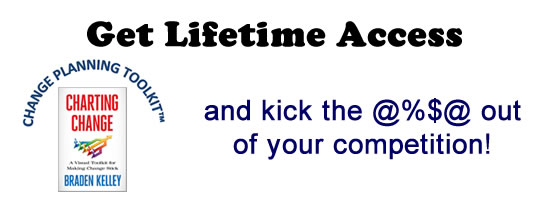Product Development Process Lessons from BOSE’s Innovations
I had the good fortune to work with Dr. Amar Bose and with the great company he founded. I helped to bring into the world two blockbuster products – BOSE’s Noise-Cancelling Headphones and the BOSE® Wave® Music System. Here are seven product development process lessons learned from our experience creating products enjoyed by millions of customers.
Lesson #1: Noise-Cancelling Headphones Were Not About Cancelling Noise.
Bose wanted to improve the sound quality and tonal balance of a set of headphones. We weren’t working on a noise-reduction problem. Only after developing the technology did we realize that our aims were off-target and that the right goal was noise-reduction. In many cases, the primary benefit for consumers is unknown to developers. What turns out to be the real consumer benefit is not what you envisioned. It is often a secondary artifact of your invention that matters most in the end.
Lesson #2: Listen to Customers.
We discovered the chief benefit of the noise-cancelling technology when we took the product around the country to military installations, such as an Airforce base and an armored personnel center, in pursuit of government contracts. In these military settings, we discovered the most important benefits of our product: improving communications and ensuring hearing safety for pilots and others exposed to loud conditions over sustained periods. The product’s adoption by fighter pilots grew into interest from private and then commercial aviation, including United and American Airlines.
Lesson #3: Product Selection Can Be the Luck of the Draw.
As a young researcher out of MIT, I was working along with a technician on two problems. One project became the Noise-Cancelling Headphones. The other project was experimenting with loudspeakers that were responsive to their location and position in a room. We were able to breadboard a basic design of the Noise-Cancelling Headphones in a couple of weeks while the responsive speaker problem was thorny.
In a meeting with Dr. Bose, he made a sudden decision: abandon the research project that wasn’t working and focus on the headphones. The speaker project was dropped forever. Dr. Bose decided to pursue the energy – to follow what was working. You never know what paths to take when you’re doing pure research because you never know what is on the other side of the discovery process. There’s an element of instinct involved in scouting these paths. You can read more about product development processes in the TCGen blog.
Lesson #4: Don’t Waste Time Optimizing An Invention Because You Can.
It’s a waste of time to try to squeeze that last one percent of performance improvement out of an invention – especially if it has not yet found its way into the hands of prospective customers. It is seductive for engineers to get caught in incremental optimization because they can and not because it will prove right for the product. Just because a problem is solvable doesn’t mean you should solve it. The engineer’s time is better spent on improving cost, quality, or reliability. Most importantly, put your invention into the hands of consumers who will tell you what is really good or bad about it.
Lesson #5: Do Pure Research.
Innovations are fragile. The system is wired against them and they often fail. Having structure around pure research can give innovations a greenhouse in which to grow to a level of maturity. Bose spent a significant percentage of its total R&D budget on pure innovation. A rather large team was dedicated to it and a manager was assigned to oversee it. This research unit had some fine talent that spawned great ideas. Learn to nurture ideas. Providing a structure for these fragile plants helps them grow.
Lesson #6: Marketing Must Support Inventions.
Bose found it difficult to commercialize its Noise-Cancelling Headphone technology. Fortunately, we took full advantage of the lead we had in this segment (the incumbents were totally surprised). We learned that it is critically important to have the technology innovator supported by people on the marketing side who welcome and optimize the offering. It is not sufficient to have a great idea. Innovations need to find a home in Marketing and Sales as well.
Lesson #7: It’s Not Always Technology Innovation That Makes a Technology Product Successful.
The total product includes much more than the item on the shelf. It includes connections online, social sanctions, packaging, distribution, etc. Another blockbuster, the BOSE Wave Music System, had great technology but its success was due to innovations around distribution. Initially, the product had a challenge: it looked unimpressive behind the glass at Best Buy. People needed to hear it, to experience it, to understand the benefit of this audio innovation – large, vivid, full-frequency sound, in a small, beige box.
We knew we had a great product, but how could we reach consumers with it? We tried door-to-door sales (believe it or not). That didn’t work. Direct mail didn’t work much better. At last, a celebrity spokesperson made the difference. We sold it direct, with the aid of a celebrity broadcaster who took our product onto the airwaves. Ultimately, this led Bose to create its own stores. Dr. Bose was not only a product innovator but an innovator in marketing and distribution as well. It was these latter capabilities that made the difference with the BOSE Wave Music System.
Wait! Before you go…
Choose how you want the latest innovation content delivered to you:
- Daily — RSS Feed — Email — Twitter — Facebook — Linkedin Today
- Weekly — Email Newsletter — Free Magazine — Linkedin Group
 John Carter has been a widely respected adviser to technology firms over his career. John is the author of Innovate Products Faster: Graphical Tools for Accelerating Product Development. As Founder and Principal of TCGen Inc., he has advised some of the most revered technology firms in the world.
John Carter has been a widely respected adviser to technology firms over his career. John is the author of Innovate Products Faster: Graphical Tools for Accelerating Product Development. As Founder and Principal of TCGen Inc., he has advised some of the most revered technology firms in the world.
NEVER MISS ANOTHER NEWSLETTER!
LATEST BLOGS
Three things you didn’t know about credit cards
Photo by Ales Nesetril on Unsplash Many of us use credit cards regularly. From using them for everyday purchases to…
Read MoreFive CV skills of a business-minded individual
Photo by Scott Graham on Unsplash The skills listed on a CV help employers quickly understand your suitability for a…
Read More



